#dc motor speed controller
Text

3 m ·
Shared with Public

#bestindustry#bestoffers#OnTimeDelivery#bestprice#goodservice#donateorgansavelife#Hi-TechAutomation #DrugFreeIndia
Delta drives are microprocessor-based motor drives, widely used to control speed of industrial AC motors.
An AC drive is a device used to control the speed of an electrical motor in order to: enhance process control. reduce energy usage and generate energy efficiently. decrease mechanical stress on motor control applications. optimize the operation of various applications relying on electric motors
Delta connected motor will draw more line current, so the torque it produces will also be higher compared to the Star connection of the same motor. So the answer to this question is Delta connection.
A variable frequency drive (VFD) refers to AC drives only and a variable speed drive (VSD) refers to either AC Drives or DC Drives. VFDs vary the speed of an AC motor by varying the frequency to the motor. VSDs referring to DC motors vary the speed by varying the voltage to the motor.
AC motor. The AC electric motor used in a VFD system is usually a three-phase induction motor. Some types of single-phase motors or synchronous motors can be advantageous in some situations, but generally three-phase induction motors are preferred as the most economical.
Like
Comment
Share
#bestindustry#bestoffers#OnTimeDelivery#bestprice#goodservice#donateorgansavelife#Hi-TechAutomation#DrugFreeIndia#Delta drives are microprocessor-based motor drives#widely used to control speed of industrial AC motors.#An AC drive is a device used to control the speed of an electrical motor in order to: enhance process control. reduce energy usage and gene#Delta connected motor will draw more line current#so the torque it produces will also be higher compared to the Star connection of the same motor. So the answer to this question is Delta co#A variable frequency drive (VFD) refers to AC drives only and a variable speed drive (VSD) refers to either AC Drives or DC Drives. VFDs va#AC motor. The AC electric motor used in a VFD system is usually a three-phase induction motor. Some types of single-phase motors or synchro#but generally three-phase induction motors are preferred as the most economical.
0 notes
Text

The Electromagnetic Eddy Current Brake is a device that stops an electrical current from flowing in the wrong direction. The braking effect of electromagnetic eddy currents can be beneficial in applications where the energy must be dissipated efficiently, such as battery charging.
#brushless dc motors#dc motor controllers#brushless motor#brushless motors for automotive industry#dc motors#frameless torque motor#bldc high speed motor
0 notes
Video
undefined
tumblr
Tobias Bradford, It Never Stops, 2019–22
Foam-casted legs, jeans, socks, shoes, bolts (acting as weights), steel joint, nylon wire, steel, frame, rubber wheels, wood, DC motor, power supply, and motor speed controller, 57 x 21 5/8 x 15 3/4 in
535 notes
·
View notes
Note
hi. robotics question: i want an electric motor that receives input to control its force, and outputs its position. im kinda confused with different kinds of motors. controlling force is easy, right?
in terms of scale, im talking about an arduino prototype so pretty small but im fine if the motor is big enough to have its own power cable.
yeah im a programmer i dont know much about hardware :p
someone please fix me if i'm wrong, FRC uses a pretty self-contained ecosystem so I actually have no prior knowledge to answer this lol
but! based on some research, it sounds like torque control in a DC motor can be achieved by limiting the current to the motor (versus speed control, by setting voltage).[1][2] look for brushed DC motors with built-in encoders, that's the part that will tell you the motor's position. encoders can be absolute (tells you where the rotor is wrt some fixed "zero" position, consistent across power cycles) or relative/incremental (just tells you how far you've gone since you started/that you've taken a step). i'm not sure what kind of circuitry you might need to handle the current control, although looking for something marketed for arduino makes sense as a first step.[3]
there are also AC motors, brushless DC (BLDC) motors, and stepper motors, and they all have more complex control schemes that I know next to nothing about!
[1] https://electronics.stackexchange.com/questions/420289/torque-and-speed-control-of-a-dc-motor
[2] https://control.com/forums/threads/how-can-i-control-a-dc-motors-torque.14793/
[3] https://forum.arduino.cc/t/dc-motor-control-using-current-sensing/434545/5
5 notes
·
View notes
Text
The Ultimate Guide to Electric Cars: Best Choices, Affordable Options, and Everything You Need to Know

Top Picks for Electric Vehicles in 2024
A number of variables need to be taken into account while selecting the best electric car, including performance, design, technology, and range. Here are some of the standout models for 2024:
1. Tesla Model S Plaid
The Tesla Model S Plaid is a benchmark in the electric car market. With a range of over 390 miles and a 0-60 mph time of just 1.99 seconds, it sets the standard for luxury and performance in the EV segment.
Range: 390+ miles
Top Speed: 200 mph
Key Features: Autopilot, Full Self-Driving capability, 1,020 horsepower
2. Lucid Air
The Lucid Air is a luxury electric sedan that combines futuristic design with remarkable performance. With a range of up to 520 miles, it currently offers the longest range of any EV on the market.
Range: Up to 520 miles
Top Speed: 168 mph
Key Features: Lucid DreamDrive, spacious interior, 1,111 horsepower in the Dream Edition
3. Porsche Taycan
For those seeking a sports car experience, the Porsche Taycan delivers with its iconic handling and design. Available in several variants, the Taycan offers an exhilarating driving experience with rapid acceleration.
Range: Up to 256 miles
Top Speed: 161 mph
Key Features: Porsche Electric Sport Sound, 800-volt architecture, advanced regenerative braking
Cheapest Electric Cars: Affordable EV Options
Electric cars are becoming increasingly affordable, making them accessible to a broader audience. Here are some of the best budget-friendly electric cars:
1. Nissan Leaf
The Nissan Leaf is one of the most popular and affordable electric cars on the market. It’s ideal for city driving and offers a solid range for daily commutes.
Range: Up to 149 miles
Starting Price: ,800
Key Features: ProPILOT Assist, e-Pedal, affordable maintenance costs
2. Chevrolet Bolt EV
The Chevrolet Bolt EV is a compact electric car that offers a surprising amount of range and features for its price point.
Range: Up to 259 miles
Starting Price: ,000
Key Features: DC fast charging capability, roomy interior, high safety ratings
3. Hyundai Kona Electric
The Hyundai Kona Electric is a subcompact SUV that blends affordability with functionality, offering an impressive range for its class.
Range: Up to 258 miles
Starting Price: ,000
Key Features: 8-inch touchscreen, regenerative braking, adaptive cruise control
Best Electric SUVs: Top Performers in the SUV Segment
SUVs remain one of the most popular vehicle types, and the electric SUV segment is growing rapidly. Here are the best electric SUVs to consider:
1. Tesla Model Y
The Tesla Model Y is a versatile electric SUV that combines the performance and technology of the Model 3 with more cargo space and an elevated driving position.
Range: Up to 330 miles
Top Speed: 135 mph
Key Features: Dual motor all-wheel drive, panoramic glass roof, Autopilot
2. Ford Mustang Mach-E
The Ford Mustang Mach-E is a bold new entry into the electric SUV market, blending the iconic Mustang design with modern electric performance.
Range: Up to 300 miles
Top Speed: 124 mph
Key Features: Ford Co-Pilot360, 15.5-inch touchscreen, Mustang-inspired design
3. Audi e-tron
The Audi e-tron is a premium electric SUV that offers a luxurious interior and smooth, quiet driving experience.
Range: Up to 222 miles
Top Speed: 124 mph
Key Features: Quattro all-wheel drive, Virtual Cockpit, adaptive air suspension
Electric Cars for Sale: Where to Find the Best Deals
Finding the right electric car at the best price requires a bit of research. Here are some top places to look for electric cars for sale:
1. Certified Pre-Owned (CPO) Programs
Many automakers offer certified pre-owned programs for their electric vehicles. These programs typically include a thorough inspection and warranty coverage, making them an excellent choice for budget-conscious buyers.
2. Online Marketplaces
Websites like Autotrader, Cars.com, and Carvana offer a wide selection of new and used electric vehicles. These platforms allow you to compare prices, read reviews, and even purchase vehicles online.
3. Dealerships
Local dealerships often have a selection of electric cars, especially in areas where EVs are more popular. Visiting a dealership allows you to test drive the vehicle and speak with a salesperson about available incentives.
Electric Vehicle Charging Stations: Powering Your EV
One of the most critical aspects of owning an electric car is understanding how and where to charge it. Electric vehicle charging stations are becoming more prevalent, but it’s essential to know the types and locations of these stations.
1. Types of Charging Stations
Level 1 Charging: Uses a standard 120-volt outlet. It’s the slowest option, providing about 2-5 miles of range per hour of charging.
Level 2 Charging: Requires a 240-volt outlet, similar to what is used for large appliances like dryers. It provides about 10-60 miles of range per hour.
DC Fast Charging: These stations provide the fastest charge, delivering 60-100 miles of range in about 20 minutes.
2. Finding Charging Stations
Apps like PlugShare, ChargePoint, and Tesla’s own Supercharger network can help you locate charging stations near you. Many modern EVs also have built-in navigation systems that display nearby charging stations.
3. Home Charging Solutions
Installing a home charging station is a convenient option for many EV owners. Level 2 home chargers are the most popular and can be installed in your garage or driveway, allowing you to charge your vehicle overnight.
Electric Vehicles' Future
With developments in battery technology, autonomous driving features, and sustainable materials, the electric vehicle market is growing quickly.
1. Technology of Batteries
Electric vehicle (EV) range, charging times, and overall efficiency may all be significantly increased by further research into solid-state batteries and other cutting-edge technology.
2. Self-Driving Cars
Automakers are making significant investments in autonomous driving technology. The prospect of autonomous vehicles is growing because to initiatives like Tesla's Full Self-Driving Package and other comparable technologies.
3. Ecological viability
There is a growing emphasis on recycling materials and lowering the carbon footprint of manufacturing processes in the creation of electric vehicles, making the process more sustainable. Manufacturers who are spearheading the development of more environmentally friendly production techniques are Tesla and Rivian.
2 notes
·
View notes
Text
From Sci-Fi to Reality: The Potential for Real-Life Mecha Inspired by Gundam!
I've watched mecha anime, the seriesVoltes V,Robotech, Video Senshi Laserion. In fact the great experience is watching Gundam anime.
In recent years, advances in robotics, artificial intelligence, and engineering have brought the idea of real-life mecha closer to reality. Inspired by iconic series like Gundam, researchers and engineers are exploring the possibilities of creating large, human-piloted robots. While we may not have fully functional Gundams yet, the progress made so far is promising. Let's delve into the current developments and the potential future of real mecha.
It happened during 2018
In Japan, engineer Masaaki Nagumo always dreamed of climbing into his very own Mobile Suit Gundam mecha. As an adult, he finally made that dream a reality.
Photos below:Sakakibara Kikai
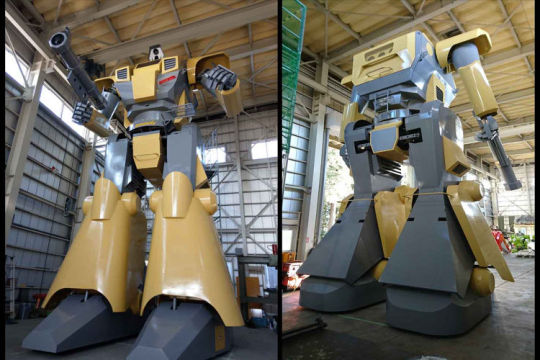
He created the 28-foot-tall, 7-tonne-heavy LW-Mononofu robot as a project for his employer, industrial machinery maker Sakakibara Kikai, in Japan’s Gunma Prefecture. The metal colossus took six years to finish, and is probably the world’s largest anime-inspired robot that you can actually ride in and control. It can move its arms and fingers, turn its upper body, and walk forward and backward at a snail-like speed of 1km/hour. As any respectable mecha, it also has a weapon – a metal gun that fires sponge balls at a speed of 87 mph.T
The LW Mononofu can be powered by both a 200-volt AC electricity source and a 24-volt DC battery. Its cockpit features levers, pedals and buttons that the rider can use to control the movements of the robot, as well as monitors showing live footage shot by cameras installed at five points on its gigantic body.
its only con is that it can't leave the hangar it was built in, because it is higher than the large door. It has to be dismantled to be taken out…
Despit this the enthuthiasts are determined to make the Giant mecha a real.
Well, thanks to the japanese company called Tsubame Industry, that dream is nearly becoming reality. Well, if we can afford paying it, of course. The small Japanese startup recently showcased its newest product, dubbed ‘ARCHAX’, a pilotable robot inspired by Japanese mecha culture. Standing a whopping 4.5 meters tall and weighing around 3.5 tons, this real-life mecha is powered by a 300V battery and can switch from a standing mode to drivable mode, attaining a top speed of 10 kilometers per hour.
Nonetheless,if someone desires to undergo the thrilling journey with the ARCHAX, he has to pay an estimated 400 million yen ($2.75 million) for one.


It's name is inspired by that of the flying dinosaur Archeopteryx – was recently showcased in a series of videos posted by Tsubame Industry, and the Japanese startup announced that a working version will be presented at the Japan Mobility Show 2023 (formerly the Tokyo Motor Show) in November. As for when the mecha will hit the market, a Tsubame spokesperson said that it is expected to be available in about a year. However, considering the high price tag, the company is targeting wealthy foreign billionaires as potential clients.
Being made of iron and aluminum alloy, while the outer shell consists mainly of FRP (fiber-reinforced plastic). Although the head appears to feature a large camera, it is only for show. In reality, the pilot maneuvering the ARCHAX will have footage captured by 26 different cameras mounted all over the mecha fed into a number of monitors inside the cockpit. The control panel is reportedly similar to that of construction machinery, consisting of two joysticks, a number of pedals, and a touchscreen. Interestingly, the ARCHAX can also be remote-operated.
This mecha can move at a speed of 2 km/h, and in drive mode that speed is increased to 10 km/h. It’s not exactly soaring through the air like in video games, but it’s better than just standing still. It can tilt forward a maximum of 20 degrees in stand-up mode and 30 degrees in drive mode, to ensure that it doesn’t fall over. If these values are exceeded, the system shuts down to prevent serious accidents. The mecha is subject to risk assessment in accordance with the safety regulations of construction machinery and robots.His mechanical arms have 5 movable fingers, and it can grab a variety of things, still the weight of them is limited to 15 kilograms, for safety reasons. Trying to lift something heavy could cause the mecha to topple, putting the pilot at risk and damaging it.
Conclusion
The journey from science fiction to reality is a challenging but exciting path. While we may not see fully operational Gundams patrolling our cities in the immediate future, the advancements in robotics, AI, and engineering are bringing us closer to realizing the dream of real-life mecha. The fusion of technology and imagination continues to push the boundaries of what is possible, making the future of mecha an exhilarating topic to watch.
#sci fi#science fiction#mecha anime#Mobile Suit Gundam#機動戦士ガンダム#Kidō Senshi Gandamu#Tomino Yoshiyuki#富野 由悠季#Military science fiction#engineer Masaaki Nagumo#robots#real giant robots#ARCHAX mecha#Tsubame Industries#日本国#Japan is great#日本が大好きです#I love Japan#artificial intelligence#giant humanoid robots#technological advancements#日本は素晴らしい#LW-Mononofu#Sakakibara Kikai#サカキバラキカイ
2 notes
·
View notes
Text
USS Texas History series: Primary Power

The round device at low, left is a motor generator set in Interior Communications compartment. Above it are two very old starter boards. The left one controls that m-g set. The right one controls a set that is out of frame. That one is dated 1918 and provided power to the newly installed Ford range keeper that generated firing solutions for the 14" guns.
Information from Tom Scott, a Volunteer at the Battleship Texas Foundation:
"AC power was certainly around by 1910 and was rapidly gaining traction throughout the country as the primary way of providing electric power, meaning the basic knowledge and technology for its use was available. So, the decision to use 120 volts D.C. on the ship wasn't based upon lack of ability. I am not aware of any historic documentation that discusses the Navy's decision for D.C., but what we can talk about are some of its advantages that contributed to its use and what was done to overcome its disadvantages.
AC current offers a couple of major advantages over DC, it's more efficient and its voltage can be easily changed using transformers. Fundamental to the nature of electricity is the higher the circuit voltage that serves a load, the lower the amperage required to run it, and vice versa. This made the use of 120 volts problematic because it required very large amperage circuits to power big loads like the 150 hp steering motor and the large number of motors sized 10hp and higher. My feeling is that it was selected due to the inability use transformers on a D.C. circuit to change voltage and the predominance of 120 volt loads on the ship that included hundreds of light fixtures and portable plug-in devices. It was simply easier to increase capacity and wire sizes to accommodate the higher amperage loads created by lower voltage than to increase the voltage design of hundreds, if not thousands, of small devices to match a higher system voltage.
Another issue that certainly affected the decision was the ability to reverse motors and control their speed. That was difficult to do with AC motors and was generally accomplished in the early 20th century with multiple winding motors that were complicated and very expensive. That's where DC offers two very significant advantages that permitted the use of simple and compact motor designs. It is easy to reverse any D.C. motor by reversing polarity, done by reversing its two power wires. Speed can be controlled by increasing or decreasing resistance in its its power circuit. That is impossible to do with A.C. motors. Small motor speed can easily be changed using a rheostat, or variable resister that uses a wiper on a resistive winding. Large motor speed control was accomplished using several large resistors that were switched in and out of the circuit with contactors. You could have almost smooth, almost continuous speed control if you had enough of them. Electric steering and its huge 150hp electric motor is the largest example on board that took full advantage of that method. Other motors, like those used to train turrets and elevate guns only ran at one speed, but had to be very accurately adjusted to the correct settings using resistor banks.
Regardless of the predominance of D.C. devices on board, the need for AC current and different voltages was present in the ship's earliest years of service and it greatly increased over time. The solution was to use motor generator sets, called m-g sets, on board where a 120 vdc motor would run an ac alternator to provide ac current and the voltage needed by a single device. In the Interior Communications compartment, there are several small ones dating back to 1916-18. There are also two very large ones synchronized together to power a large number of "selsyn (self synchronizing)" circuits that among other things, were used to provide range and bearing information from fire control towers to main battery plot and firing solutions to the guns. Others were installed in the dynamo rooms that powered the 40mm gun mounts and also provided a different dc voltage to the ship's degaussing system. However, most m-g sets were scattered throughout the ship, close to the devices that needed them. That way, they were able to avoid long wiring runs to reach the loads or changes to the overall system. They could tap into the existing 120 volt ship's system to get their power. That wasn't an easy task since it required careful engineering and design to prevent overloads or imbalances, but it was do-able.
One of the larger issues was to provide the additional power as large, new ac powered devices were added that included more radio and radar equipment, and 1.1" then 40mm anti aircraft weapons. To accommodate that, system capacity was increased 33% by replacing the four original 300kw 120v.d.c. turbo generators with four 400kw Westinghouse units. They also picked up significant capacity by replacing the big electric ovens and ranges in the crew galley with oil fired units.
So, there were significant compromises and shortcomings that were inherent to the 120 volt D.C. system, but it answered a number of almost unsolvable problems in 1910-11 when the ship was designed.
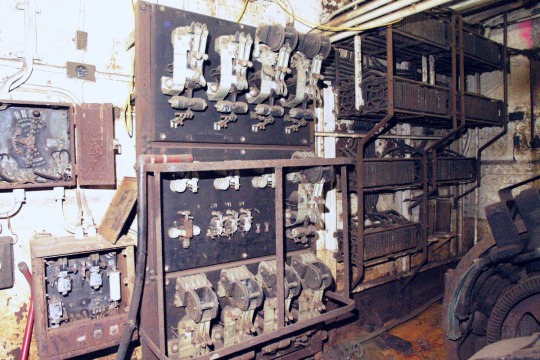
The resistor bank and contactors that controlled speed and direction for the 150hp electric steering motor.
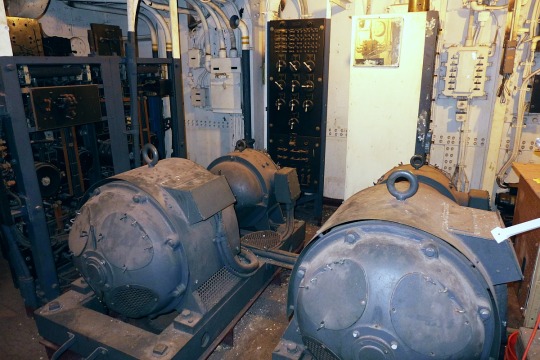
Here are the two largest motor-generator sets on the ship. They are located in Interior Communications and provided power to the gunnery systems that provided all of the range and bearing information from the fire control towers, and firing solutions to the gun turrets.
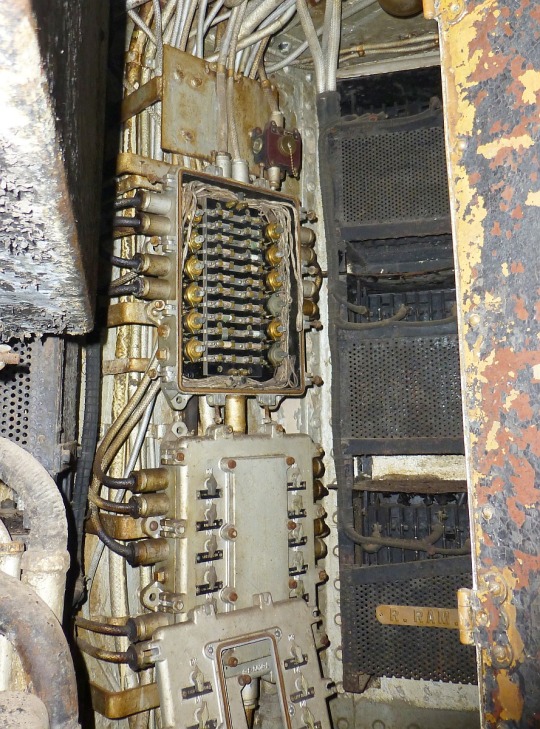
Hidden in very tight compartments beneath the turrets are the electrical platforms that contained all of the electrical panels and equipment that ran the turrets. The black boxes on the right side are resistor banks that controlled motor speed on the shell rammers.
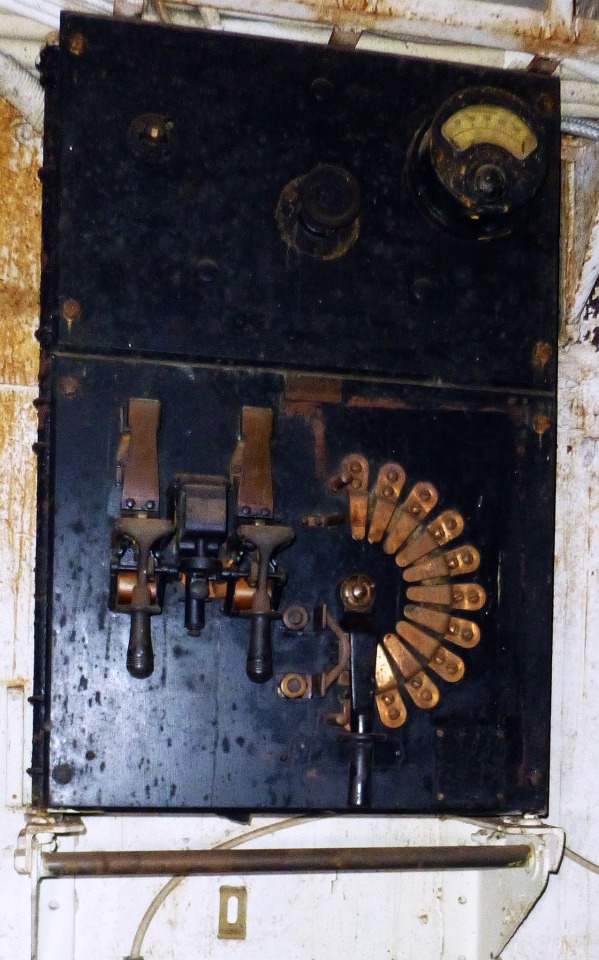
Here is one of the original 1912 controllers used on the 120 volt d.c. air compressors used to supply air charges that fired the torpedoes. The compressors were repurposed in 1925, when the torpedo tubes were removed, to serve the gas ejector systems on the 14" and 5" guns, but the old controllers remained. They were crude and simple, but they did the job well and were easily serviced.
Posted on the Battleship Texas Foundation Group Facebook page: link
20 notes
·
View notes
Text
How does an engine contribute to a car's powertrain?
The powertrain in a vehicle is the system responsible for generating power and delivering it to the wheels to propel the vehicle forward. The operation of a powertrain can vary depending on whether the vehicle is powered by an internal combustion engine (ICE) or an electric motor (in the case of electric vehicles). Here's a general overview of how a powertrain works in both types of vehicles:
Internal Combustion Engine (ICE) Vehicle - Combustion Process: In an ICE vehicle, the powertrain starts with the combustion process in the engine. Fuel (gasoline or diesel) mixes with air in the combustion chamber and is ignited by spark plugs (in gasoline engines) or compression (in diesel engines).
Power Generation: The combustion process generates energy in the form of mechanical power, causing pistons to move up and down within the cylinders of the engine. This motion drives the crankshaft, converting linear motion into rotational motion.
Transmission: The rotational motion from the crankshaft is transmitted to the transmission, which consists of gears that allow the driver to select different ratios (speeds). This enables the engine to operate efficiently across a range of vehicle speeds.
Drivetrain: The transmission sends power to the drivetrain components, including the driveshaft, differential, and axles, which transfer power to the wheels. The differential allows the wheels to rotate at different speeds, enabling smooth turns.
Wheel Movement: The power transmitted through the drivetrain causes the wheels to rotate, propelling the vehicle forward or backward depending on the gear selection and throttle input from the driver.
Electric Vehicle (EV) -
Battery Pack: The primary source of power for the EV, storing electricity in chemical form.Powers the electric motor and provides electricity for all electronic devices within the EV.
Battery Management System (BMS): Monitors battery cell conditions, including voltage, current, temperature, and state of charge (SoC).It protects the battery against overcharging, deep discharging, and overheating and helps balance the charge across cells. Ensures optimal performance and longevity of the battery by regulating its environment.
Inverter: Converts DC from the battery pack into AC to drive the electric motor.Adjusts the frequency and amplitude of the AC output to control the motor’s speed and torque. Critical for translating electrical energy into mechanical energy efficiently.
Onboard Charger: Facilitates the conversion of external AC (from the grid) to DC to charge the battery pack. Integrated within the vehicle, allowing for charging from standard electrical outlets or specialized EV charging stations. Manages charging rate based on battery status to ensure safe and efficient charging.
DC-DC Converter: Steps down the high-voltage DC from the battery pack to the lower-voltage DC needed for the vehicle's auxiliary systems, such as lighting, infotainment, and climate control. Ensures compatibility between the high-voltage battery system and low-voltage electronic components.
Electric Motor: Converts electrical energy into mechanical energy to propel the vehicle. It can be of various types, such as induction motors or permanent magnet synchronous motors, each offering different efficiencies and characteristics. Typically provides instant torque, resulting in rapid acceleration.
Vehicle Control Unit (VCU): The central computer or electronic control unit (ECU) that governs the EV's systems. Processes inputs from the vehicle’s sensors and driver inputs to manage power delivery, regenerative braking, and vehicle dynamics. Ensures optimal performance, energy efficiency, and safety.
Power Distribution Unit (PDU): Manages electrical power distribution from the battery to the EV’s various systems. Ensures that components such as the electric motor, onboard charger, and DC-DC converter receive the power they need to operate efficiently. Protects the vehicle's electrical systems by regulating current flow and preventing electrical faults.
In both ICE vehicles and EVs, the powertrain's components work together to convert energy into motion, enabling the vehicle to move efficiently and effectively. However, the specific technologies and processes involved differ significantly between the two propulsion systems.
#electric powertrain technology#conventional powertrain#Electric vehicle components#revolo hybrid car kit#ev powertrain development services#software (SW) platforms for all Electric vehicles components#Battery Management Systems#Inverter#Smart Charger#VCU solutions
3 notes
·
View notes
Note
Sydney Trains M set
Class of electric train operating in Sydney, Australia
The Sydney Trains M sets, also referred to as the Millennium trains, are a class of electric multiple units that operate on the Sydney Trains network. Built by EDi Rail between 2002 and 2005, the first sets initially entered service under the CityRail brand on 1 July 2002 after short delays due to electrical defects. The M sets were built as "fourth generation" trains for Sydney's suburban rail fleet, replacing the 1960s Tulloch carriages and providing extra capacity on the suburban rail network. The sets currently operate on the T2 Inner West & Leppington, T3 Bankstown, T5 Cumberland, T7 Olympic Park and T8 Airport & South lines.
Quick Facts M set, In service ...
M set
M32 at Sydney Central
Lower deck
In service
2002–present
Manufacturer
EDi Rail
Built at
Cardiff
Replaced
Tulloch carriages
Constructed
2002–2005
Entered service
1 July 2002
Number built
141 carriages
Number in service
140 carriages
Formation
35 4-car sets
Fleet numbers
D1001–D1041, D1043–D1060, D1062–D1073 (driving trailers)
N1501–N1540, N1543–N1560, N1562–N1573 (motor cars)
M1–M35 (full 4-car sets)
Capacity
452
Operators
Sydney Trains
Depots
Auburn
Lines served
Inner West & Leppington
Bankstown
Cumberland
Olympic Park
Airport & South
Specifications
Car body construction
Stainless steel
Train length
81.55 m (267 ft 6+5⁄8 in)
Car length
20,532 mm (67 ft 4+3⁄8 in) (D)
20,243 mm (66 ft 5 in) (N)
Width
3.03 m (9 ft 11+1⁄4 in)
Height
4,381 mm (14 ft 4+1⁄2 in)
Doors
Plug-style, 2 per side
Wheel diameter
940 mm (37 in)
Maximum speed
130 km/h (81 mph) (design)
115 km/h (71 mph) (service)
Weight
207 t (204 long tons; 228 short tons)
Traction system
Alstom ONIX 1500 2-level IGBT–VVVF
Traction motors
8 × Alstom 4-EXA-2144 226 kW (303 hp) 3-phase AC induction motor
Power output
1,808 kW (2,425 hp)
Electric system(s)
1,500 V DC (nominal) from overhead catenary
Current collector(s)
Pantograph
UIC classification
2′2′+Bo′Bo′+Bo′Bo′+2′2′
Braking system(s)
Automatic air, electropneumatic and regenerative
Coupling system
Scharfenberg coupler
Track gauge
1,435 mm (4 ft 8+1⁄2 in) standard gauge
Close
Design
Vestibule
The Millennium train, like the entire Sydney Trains fleet and electric NSW TrainLink fleet, is a double decker. It is a four car consist, with the middle two cars being non-control motor cars and the two outer cars being driving control trailer cars fitted with the pantograph. The Millennium train was the first to be equipped with an AC drive system unlike the Tangara, which has a DC drive system. The sets usually operate in eight-car formations with two four-car sets combined. While the Millennium train concept is an evolution of the Tangara concept (manufactured by A Goninan & Co), the Millennium train introduced new features such as internal electronic destination indicators, automated digital voice announcements for upcoming stops, a return to reversible seating, surveillance cameras, wider stairways, a new safety yellow colour scheme, and push-button opened internal doors. The Millennium Train also introduced crumple zones to absorb impact in a collision. Interiors were designed by Transport Design International.
The train also features emergency help points, allowing passengers to contact the train crew in an emergency. The help points are located on the sides of the stairwell to the upper deck. There are actually two help points in the same location, with a large one at face height with a microphone and speaker, and a lower one with a microphone only. There are also emergency door releases which were retrofitted to the trains. These allow passengers to manually open the doors in an emergency, as recommended in the report for the Waterfall rail accident. The retrofit program was stated as having been completed in November 2014.
Like with the T, A and B sets, the M sets feature Scharfenberg couplers.
M sets are 3.03 metres (9 ft 11+1⁄4 in) wide, being classed by Transport for NSW as medium width trains, which allows them to operate within the whole Sydney Trains suburban network.
Unlike sets M2–M35, set M1 has a slightly different interior design with differently coloured doors and different seat handles for unknown reasons.
Delivery
Stairwell
The cars were constructed by EDi Rail at Cardiff Workshops. The contract included a 15-year maintenance agreement with EDi Rail to maintain the trains at a specialised maintenance centre at Eveleigh. During testing and initial revenue service, they ran as four car sets, with eight car sets commencing service towards the end of 2002 after further testing. All 35 four car sets were delivered by October 2005.
The initial order signed in October 1998 was for 81 carriages, in December 2002 an option was taken up for an additional 60. In February 2017, Sydney Trains exercised an option to extend Downer's maintenance of the trains for a further 10 years.
Criticisms
The Millennium trains were criticised for having several technical problems and causing problems with Sydney Trains, they were referred to in the media reports as The "Mi-lemon" and "Millenni-Bug" as a result. Some of the problems were caused by insufficient power supply on the overhead to cope with the power demands of the more technologically advanced trains causing them to shut down. Software bugs also contributed to the trains' poor reliability.
The Millennium trains were withdrawn from service in April 2003 while the problems were being rectified and a full audit was carried out. They were subsequently reintroduced into service in June 2003 and have since been operating on the T2 Inner West & Leppington, T3 Bankstown, T6 Carlingford, T7 Olympic Park and T8 Airport & South lines. After the new timetable was released on 26 November 2017, M sets began as 4-car services on the T5 Cumberland line on both weekdays & weekends, along with a few 8-car Waratahs.
In service
External Carriage Camera Trial
Trial cameras
In late 2008, two Millennium trains were fitted with external cameras atop of carriages near the doors, testing their use for the then-future Waratah trains. These cameras were subsequently incorporated into the final design of the Waratah train.
Lines serviced
The Millennium trains typically operate on the following lines (normally described as Sector 2):
T2 Inner West & Leppington Line: Leppington or Parramatta to City Circle via Granville
T3 Bankstown Line: Liverpool or Lidcombe to City Circle via Bankstown
T5 Cumberland Line: Leppington to Richmond
T7 Olympic Park Line: Shuttle from Lidcombe to Olympic Park on weekdays
T8 Airport & South Line: Macarthur to City Circle via Airport or Sydenham
Maintenance Depots
The trains were originally maintained at Eveleigh Maintenance Centre.
As with all other trains, these trains are not exclusively kept in Auburn overnight. They only need to return to the depot for maintenance, and at other times, they may be stabled at various yards on the lines that they operate, such as Liverpool and Leppington yards -Anastasia the train girl
I won’t be able to post as much cause mental issues plus I just came out to a friend as trans so I have to deal with that to
sorry for taking so long to respond! I've been busy lately.
9/10 good train (minus the bugs)
(also i hope all goes well for you! I enjoy your train asks, but don't feel bad if you don't want to send them as often.)
#trains#this one was cool#it seemed to sort of introduce concepts that were perfected for modern trains#so that's cool
3 notes
·
View notes
Text

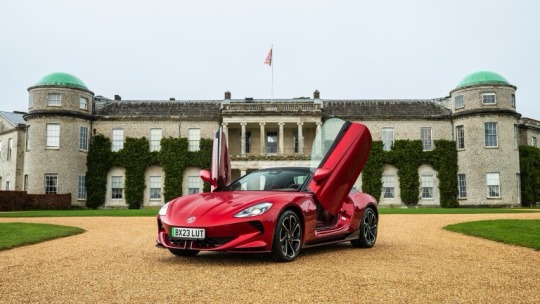
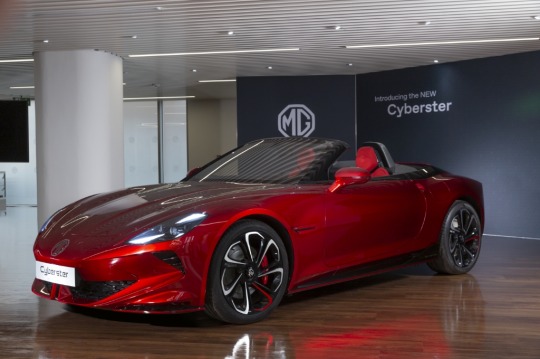
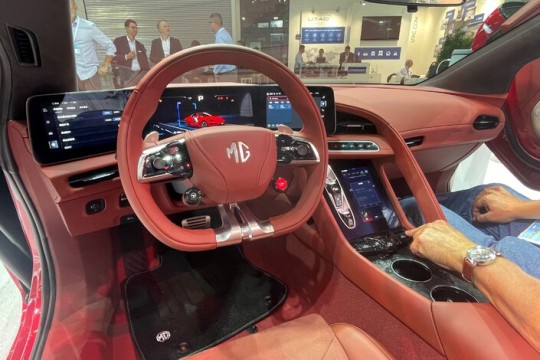
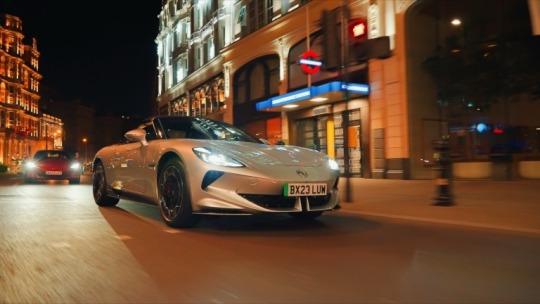
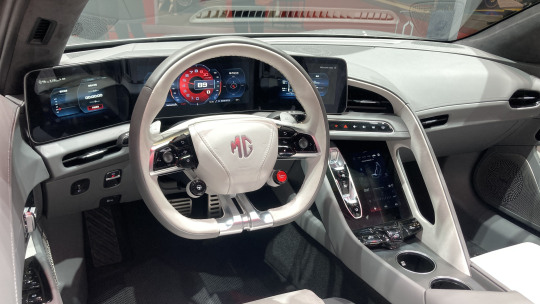
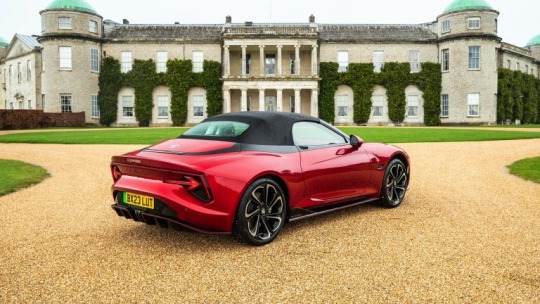
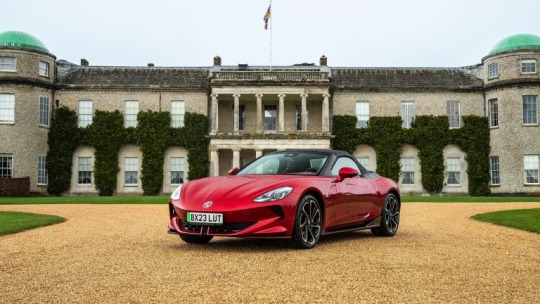
The new electric MG convertible might therefor be well placed to offer a more balanced option for those customers looking for a performance experience. Building upon the brand’s heritage and presence, this is anything other than a boring car. With formidable power and acceleration, plus a whole host of luxury and sporty finishes. As UK customers can discover on their configurator (https://www.mgcyberster.co.uk/configurator), there are two key options to choose from including:
Trophy - from £54,995 this is a Single Motor with 19” alloys; and
GT - from £59,995 this is a Dual Motor with 20” alloys.
Standard options include auto LED headlights, electrically adjustable / heated / folding door mirrors, front / rear parking sensors, electric scissor doors, fully electric good, launch control, 7” touch screen, wraparound 3-screen cockpit, 8-spekaer BOSE audio, adaptive cruise control, lane keep assist, active emergency braking, lane change assist, blind spot assist, heated seats, electric lumbar support, leather seats, wind deflector, climate control, keyless entry, ambient lighting, navigation, parking camera and V2L.
Colours include English White, Camden Grey, Cosmic Silver, Dynamic Red and Inca Yellow. Also choose between a standard black hood or, for the white / grey / silver option, consider the red hood. Inside, the interior options include Black / Red or Grey.
And how does the new Cyberster perform?
Trophy - this RWD Convertible will have a 74 kWh usable battery which will offer 0 – 62 times of 5.0 seconds, 121 mph top speeds and 250 kW (or 335hp). Expect a combined winter range of 225 miles with warmer weather allowing for 305 miles – a 265 mile combined. On charging, the 7.4 kW AC max will allow 12 hour and 30 min 0 – 100% charging times with the 144 kW DC maximum allowing 39 minute 10 – 80% times. A cargo volume of 249L is available with this car. It has a vehicle fuel equivalent of 144 mpg. It has Bidirectional capabilities, with the V2L (vehicle-to-load) supported; and
GT- this AWD Convertible will have a 74 kWh usable battery which will offer 0 – 62 times of 3.2 seconds, 124 mph top speeds and 375 kW (or 503hp). Expect a combined winter range of 210 miles with warmer weather allowing for 285 miles – a 250 mile combined. On charging, the 7.4 kW AC max will allow 12 hour and 30 min 0 – 100% charging times with the 144 kW DC maximum allowing 39 minute 10 – 80% times. A cargo volume of 249L is available with this car. It has a vehicle fuel equivalent of 136 mpg. It has Bidirectional capabilities, with the V2L (vehicle-to-load) supported.
2 notes
·
View notes
Photo
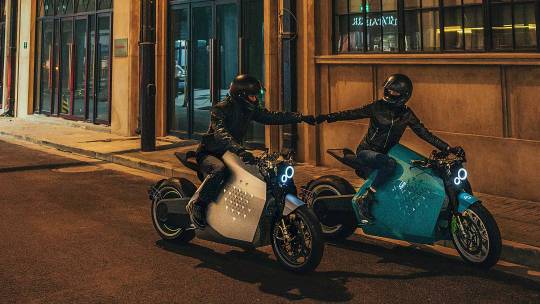


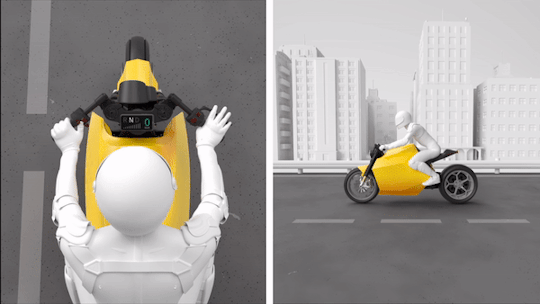
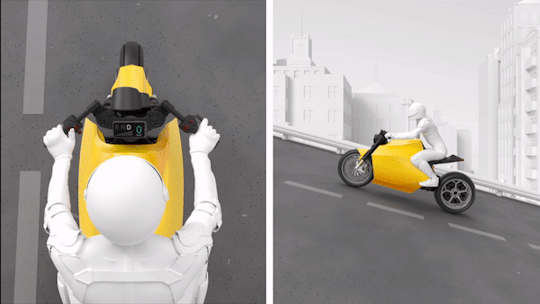

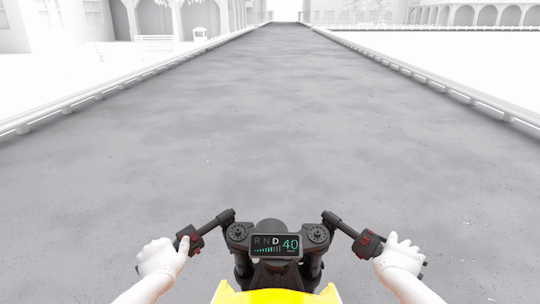

Davinci Motor's DC100 High-Performance Electric Motorcycle,
The DC100 rivals its 1,000cc gas-powered counterpart when it comes to performance, evidenced by outstanding technical data: acceleration 0-100 km/h in about 3 sec, top speed of 200 km/h, peak power of 100 kw, and peak torque of 850 Nm. On top of all that, the DC100 was designed using new energy vehicles (NEV) as a benchmark for range and charging method, elevating industry standards of two-wheeled electric vehicles.
The DC100 is compatible with L3 DC Fast Chargers in the United States, Europe and China, which can deliver a full charge in about 30 minutes.
Designed with a robotic concept, the DC100 is capable of sensing, computing and executing. While riding, the DC100 has the capacity to track accurate information such as ambient temperature, battery and motor temperature, lean angle, traveling speed, wheel speed and road conditions.
Furthermore, it combines this vehicle and environmental data and user commands to precisely control its power system. To address the difficulty of riding a heavy-duty motorcycle, the DC100 is designed with various assist features (with over 300 chips and 200 sensors) including the Hill Start Assist Control and Hill Descent Control, Reverse Assist, Combined Braking System, Traction Control System, all of which render the riding experience easier and safer.
Hence, the DC100 is a two-wheeled dynamic robot in both appearance and performance.
Images courtesy of Davinci
#art#design#motorbike#DC100#Davinci#china#e-bike#robotic#bike#motorcycle#e-motorbike#electric#computer#futuristic#robot#two-wheelers#zibo#sensor#chips
38 notes
·
View notes
Text
DIY Hovercraft debrief
- Hardware: A-
Even with basic skirt design, performance is okay on concrete. By moving the entire rear propeller to steer instead of having a rudder, the hovercraft demonstrates great agility. Reusing the same electronic speed controller, brushless DC motor and propeller models for both thrust and skirt inflation modules simplifies the build process. Based on an expanded polistyrene slab, with trash bag skirt, motors mounted on 2x4 wood planks, (the rear one bolted to a steel angle glued directly to the servo horn), and with a cardboard duct to direct air towards the front propeller, with the front mounted (for balance) battery the hovercraft has the smallest number of parts necessary to function
(additionally matching wood and cardboard colors along with yellowish foam/blue skirt proves a simple but eye pleasing color scheme)
- Software: F
This thing does what it wants and, since I didn't try implementing an AI driver, this is NOT a good thing
6 notes
·
View notes
Text
Brushless DC Motors
Brushless DC motors are perfect for applications that require a quiet motor. These motors employ permanent magnets, which result in reduced noise and vibration. These are made of permanent magnets that create a robust DC power system for use in products such as leaf blowers, bikes and other motorized equipment.

0 notes
Text
2 notes
·
View notes
Text
This 1203B PWM 6V 12V 24V 28V 3A DC Motor Speed Regulator allows controlling the speed of a motor with fully adjustable 0%-100%. The motor speed controller can easily provide a continuous current of 3A to your DC motor or other DC load.
3 notes
·
View notes
Text
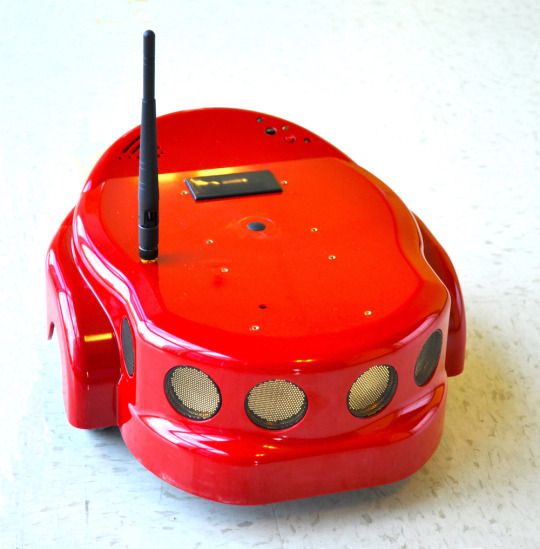



AmigoBOT by ActivMedia Robotics (1999), Peterborough, NH. AmigoBot is a low-priced, sturdy, basic intelligent mobile robotic platform for the budget-minded, “AmigoBot is intended for use indoors, including homes, schools, nursing homes, hospitals, offices, and research labs. The small, lightweight, and highly maneuverable AmigoBot has two solid 4-inch rubber tires, each driven by a reversible DC motor. Drive power is differentially pulse-width modulated for fine and independent control of translational (forward and reverse) and rotational (clockwise and counterclockwise) motion. AmigoBot’s drive system includes a passive rear caster for balance, and, unlike many other robots, it can turn in place so it doesn’t get stuck in corners. Each drive motor includes a high-resolution encoder that is used by AmigoBot’s microcontroller to determine the robot’s immediate translational and rotational speeds. Encoder readings also help determine how far the robot is traveling and the direction in which it is heading. The standard AmigoBot comes with eight sonar—the six perforated gold discs around the front and the two in the rear. AmigoBot’s micro-controller uses sonar like a bat to not only sense objects forward, side, and aft, but also to determine how far away they are.” – AmigoBot User’s Guide.
11 notes
·
View notes